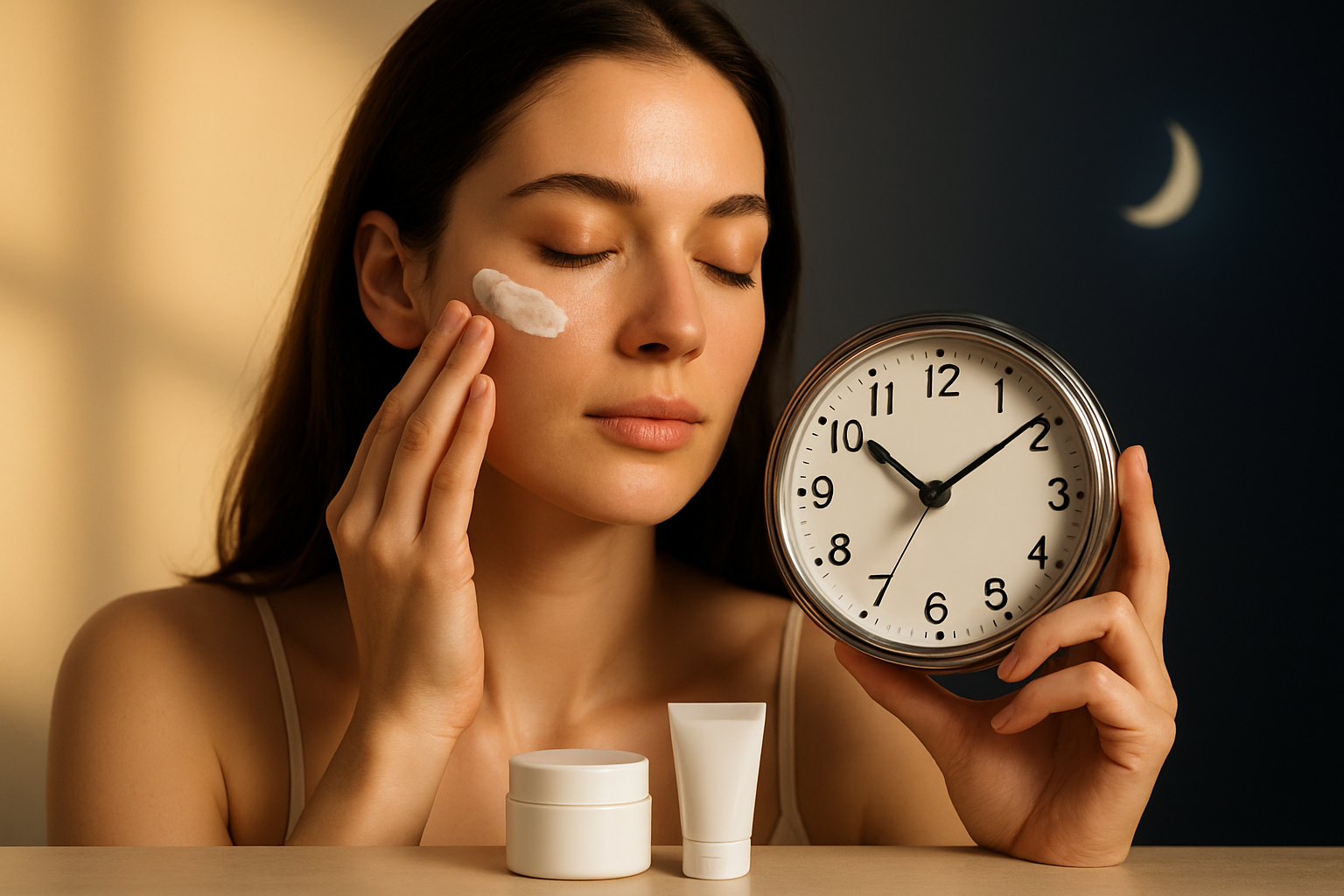Chronobiotic Skincare: Timing Your Routine for Maximum Results
The concept of chronobiology—how our bodies respond to natural cycles of time—has quietly revolutionized skincare approaches over the past decade. Yet most consumers remain unaware that when they apply products may be just as important as what they apply. Chronobiotic skincare, the practice of timing skincare applications to align with the body's natural biological rhythms, represents a fascinating intersection of dermatology, chronobiology, and cosmetic chemistry. This emerging approach leverages our understanding of the skin's regenerative timeline to maximize product efficacy and address concerns with unprecedented precision. The practice goes well beyond simply applying night cream after dark; it involves a sophisticated understanding of cellular renewal phases and how ingredients interact with skin at different times of day.

The Science of Skin Timing
Our skin follows a predictable 24-hour cycle that influences everything from oil production to cellular repair. Research published in the Journal of Investigative Dermatology demonstrates that skin permeability peaks in the evening, making this an optimal time for treatment product application. During daylight hours, skin focuses on defense mechanisms against environmental aggressors like UV radiation and pollution. Transepidermal water loss increases throughout the day, peaking around 4pm when skin becomes more permeable. Conversely, skin cell proliferation accelerates during sleep, with the greatest regenerative activity occurring between 11pm and 4am—a period dermatologists call the “golden time” for repair. This biological rhythm explains why identical products can deliver noticeably different results depending on application timing.
Morning vs. Evening: Strategic Application Principles
Morning skincare should prioritize protection and preparation. Between 6-9am, cortisol levels naturally peak, triggering increased sebum production. Water-based, lightweight formulations absorb more effectively during this time, while antioxidants like vitamin C provide maximum benefit when applied early to combat daytime oxidative stress. Research from the University of California found that antioxidants applied in the morning demonstrated 37% greater efficacy against free radical damage than identical formulations applied at night. Conversely, evening applications should emphasize repair and regeneration. After 7pm, skin’s permeability increases by up to 60%, enhancing ingredient penetration. This makes evening the optimal time for active ingredients like retinoids, peptides, and growth factors that support cellular turnover and collagen production during the sleep cycle.
The 72-Hour Exfoliation Timeline
Exfoliation represents one of the most timing-sensitive skincare practices, operating on a distinct 72-hour cycle that few consumers fully understand. The first 24 hours post-exfoliation constitute what dermatologists call the “vulnerability window”—a period when skin barrier function is temporarily compromised but cellular renewal is accelerated. During this phase, hydrating ingredients like hyaluronic acid and ceramides absorb more effectively, but skin also becomes hypersensitive to potential irritants. Between hours 24-48, skin enters a recovery phase with increased microcirculation and heightened responsiveness to brightening agents. By hours 48-72, regenerated cells reach the surface, making this the optimal time for another exfoliation session. Understanding this timeline allows for strategic product rotation that maximizes benefits while minimizing irritation risk.
Circadian Rhythm Disruption and Skin Health
Modern lifestyle factors—blue light exposure, irregular sleep patterns, shift work—increasingly disrupt our natural circadian rhythms with measurable consequences for skin health. A 2019 study in the International Journal of Molecular Sciences found that participants with disrupted sleep schedules showed up to 30% slower wound healing and accelerated signs of aging compared to those with regular sleep patterns. This phenomenon, termed “circadian skin dysfunction,” manifests as increased inflammation, compromised barrier function, and reduced cellular repair efficiency. Chronobiotic skincare addresses these challenges through specialized formulations designed to reset and support skin’s natural timing mechanisms. Ingredients like nobiletin (found in citrus peel), certain peptide complexes, and melatonin derivatives have demonstrated the ability to help resynchronize disrupted skin rhythms when applied at specific times.
Seasonal Chronobiotics: Adapting Throughout the Year
Beyond daily cycles, skin also responds to seasonal variations that necessitate timing adjustments in skincare routines. During winter months, research indicates that skin barrier recovery slows by approximately 25% while sebum production decreases by up to 40%. This creates a seasonal window when lipid-rich formulations deliver enhanced benefits, particularly when applied in the late afternoon when indoor heating systems most severely impact hydration levels. Summer presents the opposite challenge—increased humidity and UV exposure accelerate cellular metabolism while potentially disrupting barrier function. During warmer months, the optimal window for intensive treatments shifts earlier to avoid the increased inflammation response that accompanies higher evening body temperatures. Progressive chronobiotic skincare addresses these variations through seasonal timing adjustments rather than merely switching products.
Implementing a Chronobiotic Routine
Creating an effective chronobiotic skincare regimen requires understanding both generic timing principles and individual biological variations. Begin by establishing consistency in your sleep-wake cycle to stabilize underlying circadian rhythms. Morning routines should follow a progression from lightest to heaviest formulations, with antioxidants applied immediately after cleansing when absorption rates peak. Water-based hydration should be applied between 7-9am when skin most effectively retains moisture, while sunscreen application timing should align with your expected UV exposure schedule rather than strictly with clock time. Evening routines benefit from strategic spacing—applying active ingredients like retinoids approximately 30 minutes before bed optimizes their alignment with peak cellular regeneration phases while minimizing potential transfer to pillowcases. Exfoliation should be scheduled at consistent 72-hour intervals, ideally in the evening when the skin’s recovery mechanisms will be most active during subsequent sleep.
By aligning skincare applications with the body’s natural biological rhythms, chronobiotic approaches represent a sophisticated evolution beyond the traditional focus on ingredients alone. This timing-based methodology enhances product efficacy while potentially reducing the quantity of products needed—a promising development for both skin health and sustainability in the beauty industry.





